TSLP target drug cell screening model
Thymic stromal lymphopoietin (TSLP) is a cytokine expressed and secreted by epithelial cells on the surface of the lung, skin and intestine. It is homologous to IL-7 and was first discovered in 1994. TSLP is divided into short subtype and long subtype, which are composed of 60 amino acids and 159 amino acids, respectively.
The receptor of TSLP in the body is TSLPR. TSLP first binds to TSLPR, and then recruits IL-7Rα protein to form an active TSLP/TSLPR/IL-7Rα complex, while TSLP itself has no obvious affinity for IL-7Rα. Activating downstream JAK1 and JAK2, leading to the activation of transcription factors such as MAPK signaling pathway, STAT5, STAT1, STAT3 and NKκB, leading to cell proliferation and the expression of inflammatory factors.
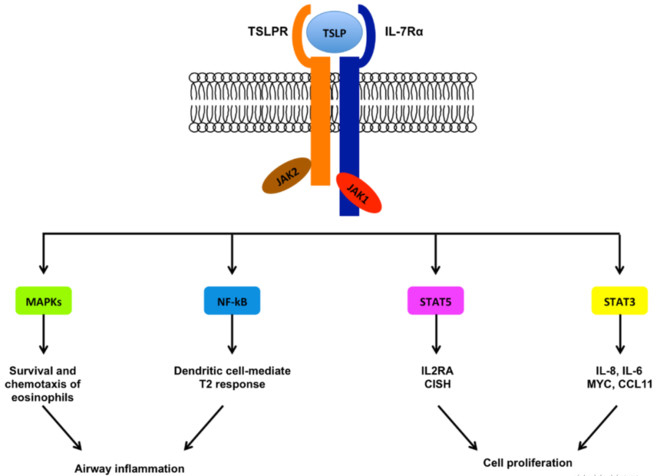
The function of TSLP protein in the field of biomedicine is most studied in asthma. Existing studies have shown that TSLP expression in the airways of asthma patients is increased compared with healthy people, and is related to disease severity and lung function. TSLP is a key mediator of the pathological process of asthma. By acting on a variety of adaptive and innate immune cells, it drives airway eosinophilic (allergic and non-allergic) inflammation, non-eosinophilic inflammation and airway structural changes. When airway epithelial cells are exposed to various harmful substances such as mechanical damage, infection-related factors, lung allergens, viruses and other pathogens, it will cause the production and release of TSLP of airway epithelial cells, which directly act on T cells, mast cells and Natural killer cells indirectly activate DC cells located in the lung or skin epithelium, and then transfer to lymph nodes to activate CD4+ T cells to differentiate into type 2 cells, thereby promoting type 2 immune responses and leading to the production of a large number of pro-inflammatory cytokines, such as IL-4, IL-5 and IL-13 can enhance the production of immunoglobulin E, mast cells and mucus, and increase airway hyperresponsiveness, leading to inflammation and asthma symptoms.
Therefore, targeting TSLP and TSLP-mediated signaling pathways is considered to be a possible strategy for the treatment of asthma. There have been clinical trials of TSLP blockade that have produced positive results in a wide range of asthma patients: reduced deterioration and multiple inflammatory biomarkers, At the same time, lung function is improved.
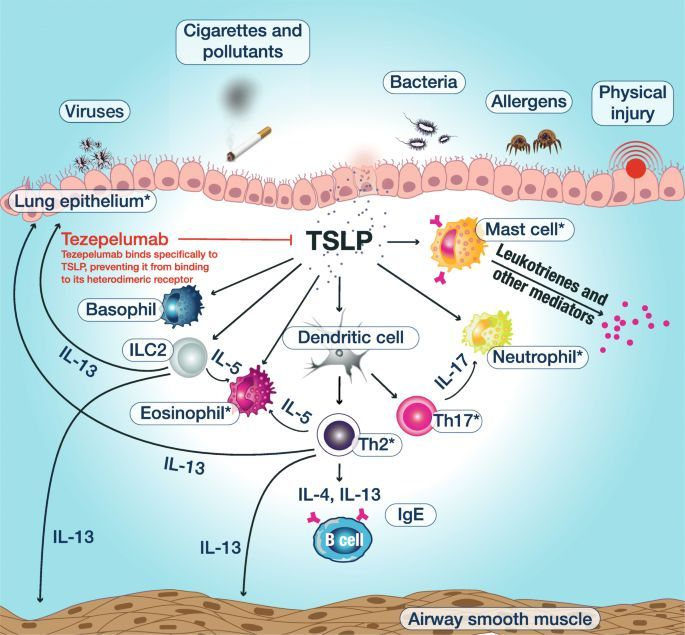
In addition to inflammatory diseases such as asthma and allergies, existing studies have also found that TSLP levels are elevated in many different types of tumors, especially breast cancer, which mediate the interaction between cancer cells and the immune system, but for TSLP in tumor biology The mechanism of action in science is still not very clear, and it is worthy of further study. In addition, TSLP is likely to play an important role in healthy skin barrier maintenance, sebum secretion and immune metabolism regulation, and it is also considered as a potential new target for the study of therapeutic weight loss.
Current status of TSLP target drug development
Currently there are no drugs on the market for TSLP targets, and there are few TSLP target drugs that have entered the clinical stage. Among them, the fully human IgG2λ monoclonal antibody Tezepelumab (AMG 157, MEDI9929) jointly developed by AstraZeneca and Amgen is far ahead and has been completed. A pivotal phase III clinical trial that reached the primary and key secondary endpoints. Compared with placebo, it can significantly reduce the annualized asthma attack rate (AAER) of patients with uncontrollable asthma, becoming the first organism to sustainably and significantly reduce AAER preparation. The drug has submitted a biologics license application to the US FDA in May 2021, and it may be on the market soon.
The inhaled dosage form antibody fragment CSJ-117 jointly developed by Novartis and MorphoSys has entered the phase II clinical phase. The leading domestic company is Connoa's CM326, which entered the phase I clinical phase in April 2021.
TSLP target drug cell screening model
In response to the needs of TSLP target drug development and research, we have developed the TSLPR/IL7R/BAF3 drug sieve cell line. Welcome to inquire.
Related Products
TSLPR/IL7R/BaF3 RQP74136
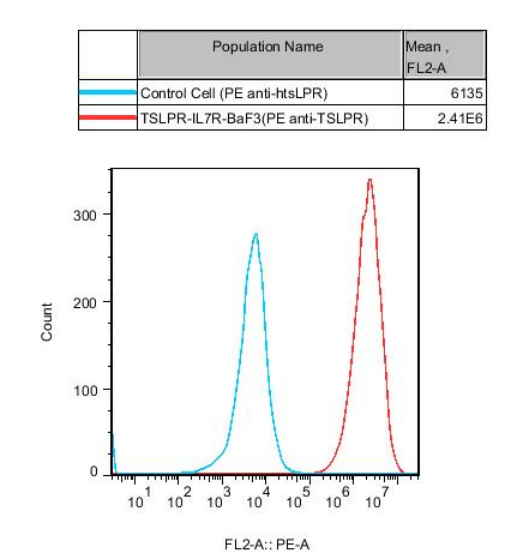
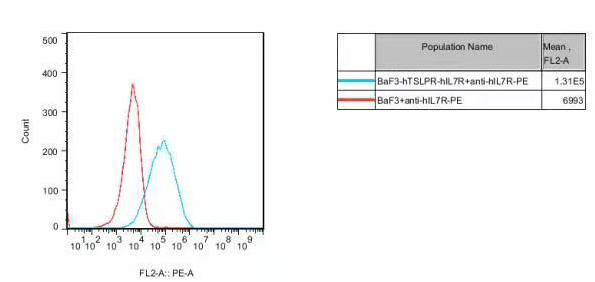
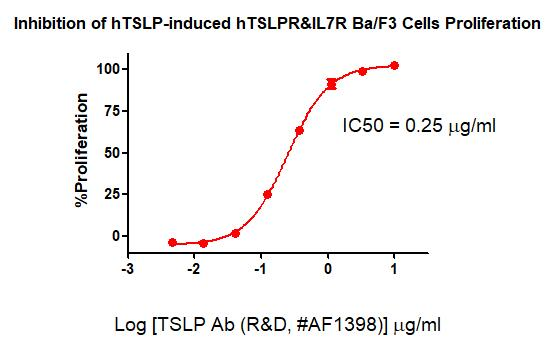
Fig. Inhibition of hTSLP-induced hTSLPR&IL7R Ba/F3 Cells Proliferation.

